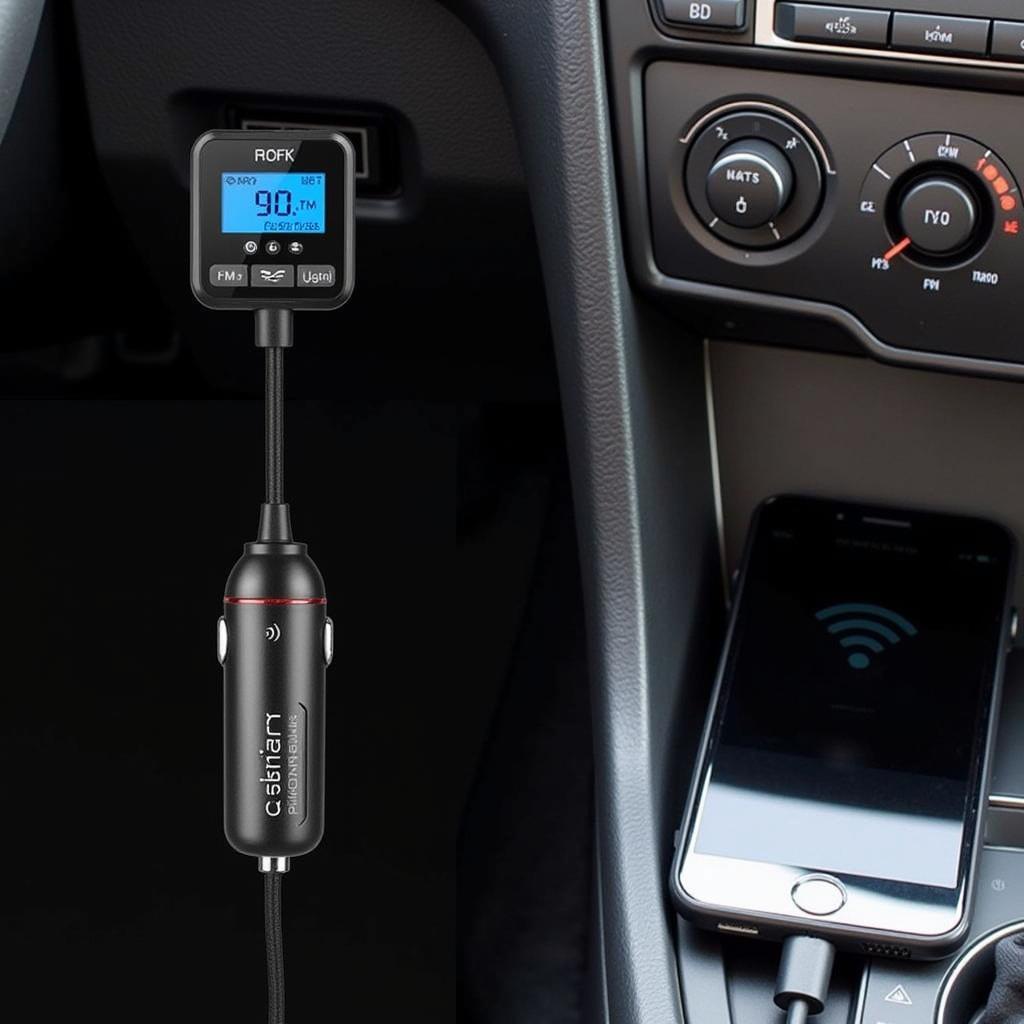The AdBlue system is an essential part of modern diesel vehicles, helping to reduce harmful emissions. However, issues can arise, like the AdBlue light staying on even after refilling the tank. This can be frustrating, but understanding the cause is the first step to resolving it.
Common Reasons for AdBlue Light Not Resetting
Here are some of the most frequent reasons why your AdBlue light might remain illuminated despite refilling the tank:
1. Faulty AdBlue Sensor
The AdBlue sensor is responsible for measuring the fluid level in the tank. If this sensor malfunctions, it might send incorrect readings to the car’s computer, leading to the AdBlue light staying on.
“A faulty AdBlue sensor is a common issue we see in our workshop,” says John Smith, a certified automotive technician with over 15 years of experience. “The sensor can become clogged, damaged, or simply fail to work properly.”
2. Blocked AdBlue Lines
The AdBlue fluid travels through a series of lines and filters to reach the exhaust system. Blockages in these lines can prevent the fluid from reaching its intended destination, causing the light to stay on.
3. AdBlue Tank Contamination
If the AdBlue tank becomes contaminated with water or other impurities, it can affect the system’s performance. This can happen due to improper storage or handling of the fluid.
4. AdBlue Module Failure
The AdBlue module is a vital component of the system. If it fails, the entire system will be affected, and the light will not reset.
Troubleshooting the AdBlue Light
Before taking your car to a mechanic, here are some things you can try to troubleshoot the AdBlue light yourself:
1. Check the AdBlue Level
Make sure the AdBlue tank is full. The AdBlue light should automatically reset once the tank is filled.
2. Inspect the AdBlue Lines
Look for any visible signs of blockage or damage in the AdBlue lines. You can try to clear any blockages using a small brush or compressed air.
3. Check for Contamination
If you suspect contamination in the AdBlue tank, try to flush the tank with clean water. However, make sure to follow the manufacturer’s instructions carefully.
4. Reset the AdBlue Light
Some cars have a feature that allows you to manually reset the AdBlue light. Check your owner’s manual to see if this option is available.
When to Seek Professional Help
If the AdBlue light remains on even after you’ve tried these troubleshooting steps, it’s time to take your car to a mechanic. They can diagnose the problem and perform any necessary repairs.
FAQs
Q: How often should I refill my AdBlue tank?
A: The frequency of refilling depends on your driving habits. However, you’ll typically need to refill the tank every 6000 to 10000 miles.
Q: What happens if I don’t refill my AdBlue tank?
A: Your car will eventually go into limp mode, limiting its performance and speed.
Q: Can I use any type of AdBlue fluid?
A: No, you should only use AdBlue fluid approved by your car’s manufacturer.
Q: How much does it cost to repair an AdBlue system problem?
A: The cost of repairs can vary depending on the issue and the repair facility. However, it’s generally a good idea to have the system inspected and maintained regularly to prevent costly repairs.
“It’s always a good idea to be proactive with your car’s AdBlue system,” says Mary Jones, an automotive expert. “Regularly checking the fluid level and having the system inspected can help to prevent costly repairs and ensure that your car runs smoothly.”
By understanding the common reasons for a non-resetting AdBlue light, you can troubleshoot the problem yourself or seek professional help promptly. Remember that a functioning AdBlue system is crucial for your car’s performance and environmental impact.

